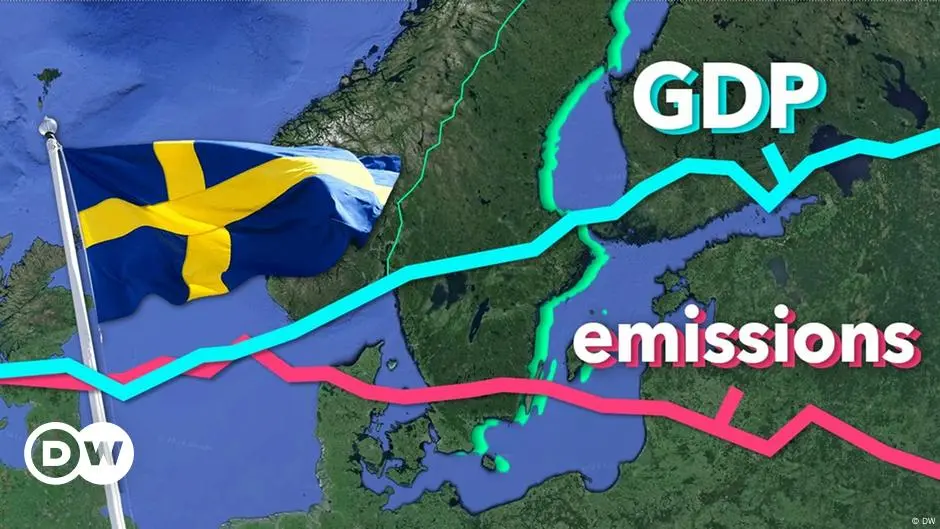The Scandinavian country has some natural advantages. 70% of Sweden is forest land. And forests are very useful when it comes to reducing greenhouse gas emissions because they remove CO2 from the atmosphere. The country is also blessed with a great deal of wind, as well as mountains, streams and lakes — perfect for renewable energy.
But it wasn’t just hitting the natural resources jackpot that got the country to where it is now. Sweden realized its natural potential early on and started investing in renewable energy sources much earlier than many other countries.
“Sweden has had hydropower for more than a century,” according to Goldmann.
They also cut out fossil fuels from their energy mix back in the 1970s, when the global oil crisis hit. When countries were looking for other sources of energy, Sweden substantially built out nuclear energy.
Today, almost 70% of Sweden’s electricity comes from renewables, especially hydropower and wind. The rest of its electricity demand is met by nuclear power. This means their greenhouse gas emissions for electricity production are almost zero right now.
“So, they are almost not using any fossil fuels for producing electricity. If you compare it with other countries, that’s a whole other world,” said Jorre De Schrijver, an energy expert from the European Environment Agency.
And it’s not just electricity that’s now produced without fossil fuels in Sweden — that also goes for heating and energy-intense industrial processes.



The figure 80% needs to be nuanced a bit. The reason for such a drastic decrease is that there is a lot of forest land in Sweden. In 1990, the emissions were 71,6 Mt CO2eq, while the absorption was 51,39 Mt CO2eq. In 2023, the emissions were 44,22 Mt CO2eq and the absorption 41,22 Mt CO2eq. The net emissions did indeed decrease >80%, but that was because forests made them low in the first place. If we look the emissions only, they only decreased 40%, which is still a good achievement, especially since the population has grown, but far from 80%. Source, Swedish Environmental Protection Agency
So to a large extent the amazing figure is due to geographic luck. It’s not very easy for other countries to copy this solution unless they also are lucky enough to have lots of forests.
It might also be worth noting that if you look at Sweden’s consumption based-emissions instead, they are about twice as high as the emissions withing Swedish borders. Ourworldindata publishes consumption-based emissions for all countries, and by that measure Swedish emissions are low by European standards, but many countries have lower emissions and Sweden is by no means an outlier. (Note, numbers don’t agree with those from Swedish Environmental Protection Agency, probably due to different methodology.)